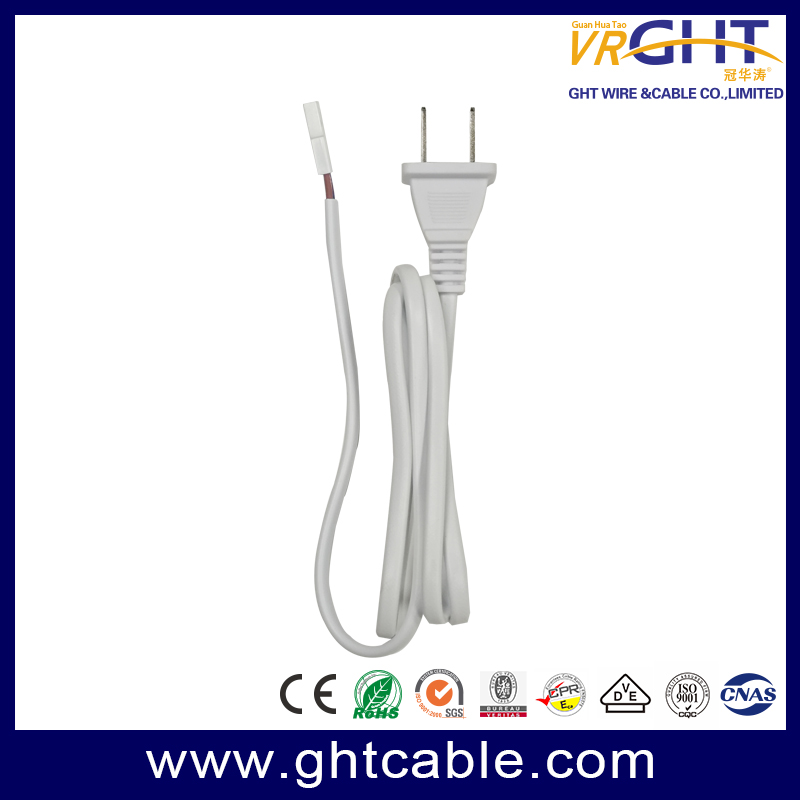
Power Cables Vs Power Cords: What Are The Differences?
When it comes to powering our homes, offices, and industrial facilities, power cables and power cords are essential components. While these terms are often used interchangeably, they refer to distinct products with unique characteristics, applications, and technical requirements. Understanding the differences between power cables and power cords is crucial for ensuring safety, efficiency, and compatibility in any electrical system. In this comprehensive guide, we'll explore their definitions, structures, uses, and how to select the right product for your needs—while introducing VRGHT's extensive range of both power cables and power cords.
What is a Power Cable?
A power cable is an electrical cable designed for the transmission and distribution of electrical power. It consists of one or more electrical conductors, typically made of copper or aluminum, bundled together and encased in an insulating sheath. Power cables are available in various configurations, including single-core and multi-core, and are engineered to handle a wide range of voltages and currents.
Key characteristics of power cables:
Permanent installation: Power cables are generally intended for long-term or permanent wiring solutions. They are commonly installed within walls, buried underground, run overhead, or exposed in industrial environments.
High voltage and current capacity: Power cables are designed to handle higher voltages and currents, making them suitable for heavy-duty applications such as electric utility infrastructure, industrial machinery, mining, and renewable energy installations.
Robust construction: These cables often feature tough insulation and sheathing materials like PVC or rubber, protecting against moisture, chemicals, abrasion, and environmental hazards.
Wide range of applications: Power cables are used in everything from residential wiring (such as NM-B cables) to powering large equipment in factories, data centers, shipyards, and power plants.
What is a Power Cord?
A power cord, sometimes called a line cord or mains cable, is a flexible, detachable cable designed to connect an electrical appliance or device to the mains electricity supply via a wall socket or extension cord. Unlike power cables, power cords are not permanently installed; instead, they are meant for temporary or portable use.
Key characteristics of power cords:
Portability and flexibility: Power cords are highly flexible and typically shorter than power cables. They are designed for ease of movement and frequent connection/disconnection.
Molded connectors: Most power cords feature molded plugs and connectors on one or both ends, allowing them to connect appliances directly to power sources. Common examples include the cords for laptops, desktop computers, televisions, and kitchen appliances.
Lower voltage and current ratings: Power cords are generally rated for standard household or office voltages (100–240V) and currents, making them suitable for consumer electronics and small appliances.
Temporary connections: Power cords are ideal for situations where devices need to be moved, replaced, or disconnected regularly, such as in offices, homes, and portable equipment.
Structural and Technical Differences
While both power cables and power cords are designed to transmit electrical power, their construction and intended use cases differ significantly.
1. Construction and Materials
Power cables are built for durability and longevity, with thick insulation and sheathing to withstand harsh environments. They often use copper for high conductivity or aluminum for lighter weight and cost savings.
Power cords prioritize flexibility and ease of use, with softer insulation and molded connectors. They are typically shorter and lighter, making them easy to handle and replace.
2. Application Environment
Power cables are used in permanent, high-demand settings such as building wiring, industrial automation, and utility infrastructure.
Power cords are used for portable, temporary connections in consumer electronics, office equipment, and small appliances.
3. Voltage and Current Ratings
Power cables can handle a broad spectrum of voltages and currents, from low-voltage control systems to high-voltage power transmission.
Power cords are generally limited to standard residential or office voltages and are not suitable for high-power industrial applications.
4. Regulatory Standards
Both products must comply with strict regulatory standards to ensure safety and performance. However, the standards and certifications may differ based on intended use, voltage, and environment.
Choosing Between Power Cable and Power Cord
Selecting the right product depends on your specific requirements:
For permanent wiring (e.g., building infrastructure, industrial machinery), choose a power cable that matches your voltage, current, and environmental needs.
For portable appliances (e.g., laptops, monitors, kitchen devices), use a power cord with the correct plug and connector type for your region and device.
Always verify that your chosen product meets the necessary safety and compliance standards for your application.
Why the Distinction Matters
Understanding the difference between power cables and power cords is more than just technical jargon—it's essential for safety, efficiency, and regulatory compliance. Using the wrong product can result in overheating, equipment failure, or even electrical hazards.
Power cables are engineered for high performance and longevity in demanding environments.
Power cords offer convenience and flexibility for everyday devices.
VRGHT: Your Trusted Supplier for Power Cables and Power Cords
Whether you need robust power cables for industrial installations or reliable power cords for office and home electronics, VRGHT is your go-to partner. As a global manufacturer and supplier, VRGHT offers:
Comprehensive product range: From heavy-duty power cables for utility and industrial applications to a full selection of power cords for electronics, appliances, and data centers.
Quality assurance: All VRGHT products undergo rigorous QC testing and comply with international safety standards, ensuring optimal performance and peace of mind.
Technical expertise: VRGHT provides expert support to help you select the right cable or cord for your specific requirements.
Fast delivery and OEM/ODM services: VRGHT supports custom solutions and rapid delivery to meet the needs of businesses worldwide.
If you're looking for a dependable source for both power cables and power cords, VRGHT's extensive portfolio guarantees you'll find the perfect fit for any application.
Conclusion
In summary, while power cables and power cords both serve to deliver electricity, their differences in structure, application, and technical specifications are significant. Power cables are designed for permanent, high-capacity installations, whereas power cords are ideal for portable, temporary connections in everyday devices. Choosing the right product ensures safety, compliance, and optimal performance.
For all your power transmission needs, from industrial projects to consumer electronics, trust VRGHT—your expert supplier of both power cables and power cords. Explore VRGHT's solutions today and power your world with confidence.











Leave a comment